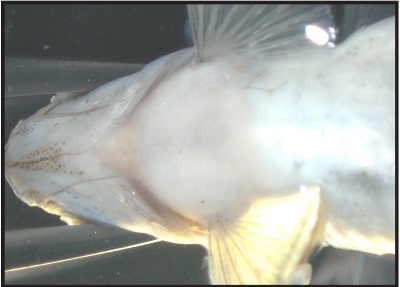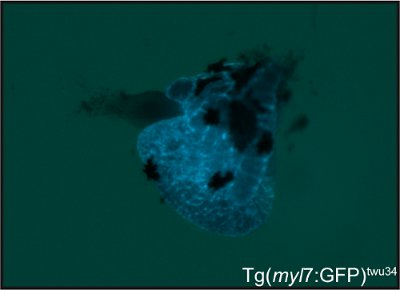需要订阅 JoVE 才能查看此. 登录或开始免费试用。
Heart Dissection: A Method to Observe Zebrafish Cardiac Development
Overview
This video describes a technique of isolating the heart from a zebrafish at multiple developmental stages to study cardiac development, maturation, and ageing.
研究方案
1. Measuring fish and dissection
- Place single fish into petri dish half filled with fresh PBS and lay it on its right side.
- Measure length of fish from snout to base of tail (the caudal peduncle), not including tail fins, using a digital mm caliper (Figure 1). This is the standard length (SL).
- Each fish can be assigned a number/letter combination to allow an individual fish and the resulting dissected heart to be tracked for later analysis. Data, including parental stock number, age at fixation, SL measurements, were entered into a spreadsheet and organized based on these labels.
- Before dissection, label PCR tube strips with assigned tracking number and fill with PBT or other solution appropriate for further analysis.
- Orient the fish ventral side up in petri dish while stabilizing the body with forceps holding the head between the eyes and gills (Figure 1).
Smaller fish (smaller than 12mm SL):
- a) Using sharp forceps, or a micro-needle in a pin holder, remove the pectoral muscles and fins from the body to reveal the heart. The constant motion of the forceps during dissection can cause currents in the PBT that move the fish. This is particularly problematic for smaller fish, thus a micro-needle can be used to remove pectoral muscles and fins and open the body cavity.
- a) Gently use the forceps to scoop the heart out of the cavity from under the atrium. Alternately, in some fish you may be able to remove the heart by gently pulling the bulbous out and the rest of the heart will follow. Be careful of the location of the atrium if using this technique as it can easily be damaged. If there is extra tissue that comes with the heart, that is fine and can be cleared after.
- a) If the fish contains a fluorescent cardiac marker such as Tg(myl7:GFP)twu34, use fluorescent scope for dissection and verify removal of the heart by florescence (Figure 2).
- a) Once the heart is removed from the cavity, use the forceps to hold the heart and a micro-needle to remove extra non-cardiac tissue and the epicardial lining from the outside of the heart.
Larger fish (greater than 12mm SL):
- b) Using spring handled micro-scissors, make three incisions of less than 1mm deep: 1- transverse cut through the gills 2- transverse cut at anterior belly 3- sagittal cut on ventral side connecting both cuts (Figure 3).
- b) Using sharp forceps remove the pectoral muscles and fins from the body to open the body cavity and reveal the silvery tissue of the pericardium (Figure 4A). Remove this pericardial tissue and the heart will become visible (Figure 4B).
- b) Use the micro-scissors to cut the artery connected to the bulbous arteriosus, located superior to the heart. Once this artery is cut, put the forceps tips under the atrium, use the forceps to scoop the heart out of the cavity. If there is extra tissue that comes with the heart, that is fine and can be removed later.
- b) Once the heart is removed from the cavity, use the two forceps to hold the heart and remove extra tissue, or one pair of forceps to hold the heart and a micro-needle to remove extra, non-cardiac tissue. The epicardial lining, evident by its black pigmentation, can be removed from the outside of the heart if desired by gently scraping the tissue.
Access restricted. Please log in or start a trial to view this content.
结果

Figure 1. Hold the fish with forceps between the eyes and gills.

Figure 2. A cardiac specific fluorescent transgenic marker such as Tg(myl7:GFP)twu34, shown here, can aid in visualizing hearts dissected from smaller fish.
Access restricted. Please log in or start a trial to view this content.
材料
| Name | Company | Catalog Number | Comments |
| Forceps #55 | Fine Science Tools | 11295-51 | |
| Micro-scissors | Fine Science Tools | 15005-08 | |
| Pin holder | Fine Science Tools | 26016-12 | |
| Micro-needles | Fine Science Tools | 10130-10 | |
| Petri dishes | BD Biosciences | 351029 |
参考文献
Access restricted. Please log in or start a trial to view this content.
This article has been published
Video Coming Soon
Source: Singleman C. et. al., Heart Dissection in Larval, Juvenile and Adult Zebrafish, Danio rerio. J. Vis. Exp. (2011).
版权所属 © 2025 MyJoVE 公司版权所有,本公司不涉及任何医疗业务和医疗服务。